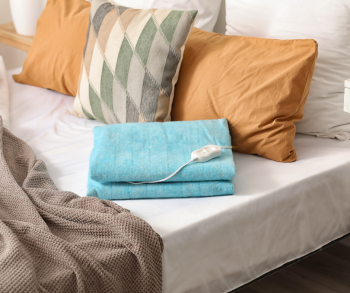Helping Seniors Understand Cold and Heat Therapy
August 6, 2025

As seniors grow older, they start to experience the lingering effects of many years of activity, which manifest as various aches and pains. While medication can provide relief, many seniors prefer the benefits of cold and heat therapy, particularly those looking for natural pain relief that won’t interfere with their medications. Having senior home care by their side helps them understand when they should reach for an ice pack versus a heating pad, which could make a difference in their comfort and recovery.
When to Choose Cold Therapy
Cold therapy works by reducing inflammation and numbing pain. The cold constricts blood vessels, which helps decrease swelling and slows nerve signals that cause pain. This makes it particularly effective for acute injuries and inflammatory conditions.
Senior home care might encourage seniors to consider cold therapy for recent injuries, such as a twisted ankle from gardening or a bruised knee from a fall. If they’ve overexerted themselves during physical activity and notice swelling or sharp pain, applying ice within the first 24-48 hours can prevent excessive inflammation. Cold therapy is also beneficial for arthritis flare-ups when joints feel hot and swollen.
Caregivers can also make sure that seniors remember to keep up with the routine, applying cold therapy 15 to 20 minutes at a time throughout the day, as well as remind them to place a thin towel between the ice pack and their skin so it is never directly on the skin. It’s also important to note that cold therapy should be avoided for seniors with circulation problems or diabetes-related nerve damage.
When Heat Therapy Works Best
Heat therapy takes the opposite approach, dilating blood vessels to increase blood flow and relax muscles. This increased circulation brings nutrients to tissues and helps remove waste products that contribute to pain and stiffness. Heat also stimulates sensory receptors that can block pain signals to the brain.
Heat therapy is best for chronic conditions and muscle tension. If seniors wake up with stiff joints or tight muscles, a warm shower or heating pad can provide morning relief. Heat works wonderfully for chronic arthritis pain when joints feel stiff but not inflamed. It's also excellent for muscle spasms, chronic back pain, and general stiffness from inactivity.
Seniors dealing with conditions like fibromyalgia or chronic muscle tension often find heat therapy particularly soothing. The warmth can improve flexibility before gentle exercise and provide comfort during periods of increased pain.
As with cold therapy, it’s important to only apply heat for 15 to 20 minutes at a time, using a heating pad, warm compress, or warm bath. Senior home care can encourage seniors to keep the temperature comfortable—it should feel warm, not hot. Additionally, they can remind seniors who might have reduced sensation in their hands and feet to stop using heat therapy if it becomes intense.
Safety Considerations for Seniors
Both heat and cold therapy require extra caution as the years pass by, as conditions like diabetes can affect sensation, skin becomes thinner and more sensitive, and circulation may become compromised. For this reason and others, it is essential for seniors to check with their medical team before starting any therapy routine, especially if they have chronic conditions or take blood-thinning medications.
With senior home care by their side, seniors can remember to use ice for acute injuries and inflammation and heat for chronic pain and stiffness. Both therapies can be valuable tools when used correctly, offering natural relief that complements the overall health strategy.
If you or your loved one is looking for Senior Home Care in Santa Clara, CA, please call Familiar Surroundings Home Care.
Santa Clara County: (408) 979-9990
San Mateo County: (650) 353-9777
Santa Cruz County: (831) 480-3990

